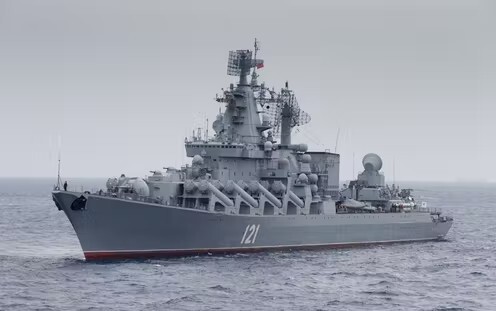In a surprising diplomatic move, the U.S. reached separate agreements with Ukraine and Russia to pause attacks on energy infrastructure and maritime targets. These deals, the first formal commitments since President Donald Trump took office, aim to reduce Black Sea tensions and explore broader ceasefire prospects.
The U.S.-Russia deal goes further than the one with Ukraine, with Washington agreeing to push for the easing of sanctions on Russian agricultural and fertilizer exports—a long-standing Kremlin demand. However, Russia insists that key banks must regain access to the SWIFT system before the maritime truce can begin. Ukraine, on the other hand, claims the deals are effective immediately and accused Moscow of manipulating the terms.
Both Kyiv and Moscow remain wary, each accusing the other of recent drone attacks. Ukrainian President Volodymyr Zelenskiy warned he would seek harsher sanctions and more weapons from Trump if Russia violated the agreement. Trump acknowledged delays by Russia but remained optimistic, calling the truce a step toward ending the war.
The deals were finalized following U.S.-led talks in Saudi Arabia, after phone calls between Trump, Zelenskiy, and Putin. Trump’s push for a 30-day ceasefire was rejected by Russia, although Ukraine supported it. Despite skepticism from European allies, Trump’s envoy expressed hope for peace and described Putin as not inherently “a bad guy,” drawing criticism from Kyiv’s supporters in Europe.
The truce includes a 30-day halt in attacks on energy infrastructure starting March 18. Ukraine warned that any Russian naval movement beyond the eastern Black Sea would be seen as hostile. Kyiv’s ports, though active again, have suffered frequent airstrikes, which the new deal is intended to prevent. Still, Russia demands broader sanctions relief before fully committing, putting the agreement’s future in question.



 Supporters Gather Ahead of Verdict in Jimmy Lai’s Landmark Hong Kong National Security Trial
Supporters Gather Ahead of Verdict in Jimmy Lai’s Landmark Hong Kong National Security Trial  Preservation Group Sues Trump Administration to Halt $300 Million White House Ballroom Project
Preservation Group Sues Trump Administration to Halt $300 Million White House Ballroom Project  U.S. Special Forces Intercept Ship Carrying Military Components Bound for Iran
U.S. Special Forces Intercept Ship Carrying Military Components Bound for Iran  Tunisia Protests Grow as Opposition Unites Against President Kais Saied’s Rule
Tunisia Protests Grow as Opposition Unites Against President Kais Saied’s Rule  Judge Orders Return of Seized Evidence in Comey-Related Case, DOJ May Seek New Warrant
Judge Orders Return of Seized Evidence in Comey-Related Case, DOJ May Seek New Warrant  Russian Drone Attack Hits Turkish Cargo Ship Carrying Sunflower Oil to Egypt, Ukraine Says
Russian Drone Attack Hits Turkish Cargo Ship Carrying Sunflower Oil to Egypt, Ukraine Says  U.S. Soldiers Killed in ISIS Attack in Palmyra, Syria During Counterterrorism Mission
U.S. Soldiers Killed in ISIS Attack in Palmyra, Syria During Counterterrorism Mission  International Stabilization Force for Gaza Nears Deployment as U.S.-Led Planning Advances
International Stabilization Force for Gaza Nears Deployment as U.S.-Led Planning Advances  U.S. Intelligence Briefly Curtailed Information Sharing With Israel Amid Gaza War Concerns
U.S. Intelligence Briefly Curtailed Information Sharing With Israel Amid Gaza War Concerns  Belarus Frees 123 Political Prisoners in U.S.-Brokered Deal Over Sanctions
Belarus Frees 123 Political Prisoners in U.S.-Brokered Deal Over Sanctions  Korea Zinc Plans $6.78 Billion U.S. Smelter Investment With Government Partnership
Korea Zinc Plans $6.78 Billion U.S. Smelter Investment With Government Partnership  U.S. Lifts Sanctions on Brazilian Supreme Court Justice Amid Shift in Brazil Relations
U.S. Lifts Sanctions on Brazilian Supreme Court Justice Amid Shift in Brazil Relations  Ukraine’s NATO Concession Unlikely to Shift Peace Talks, Experts Say
Ukraine’s NATO Concession Unlikely to Shift Peace Talks, Experts Say  International Outcry Grows Over Re-Arrest of Nobel Laureate Narges Mohammadi in Iran
International Outcry Grows Over Re-Arrest of Nobel Laureate Narges Mohammadi in Iran  Syria Arrests Five Suspects After Deadly Attack on U.S. and Syrian Troops in Palmyra
Syria Arrests Five Suspects After Deadly Attack on U.S. and Syrian Troops in Palmyra  Bolivia Orders Pre-Trial Detention of Former President Luis Arce Over Embezzlement Probe
Bolivia Orders Pre-Trial Detention of Former President Luis Arce Over Embezzlement Probe  Colombia’s Clan del Golfo Peace Talks Signal Mandatory Prison Sentences for Top Leaders
Colombia’s Clan del Golfo Peace Talks Signal Mandatory Prison Sentences for Top Leaders 































